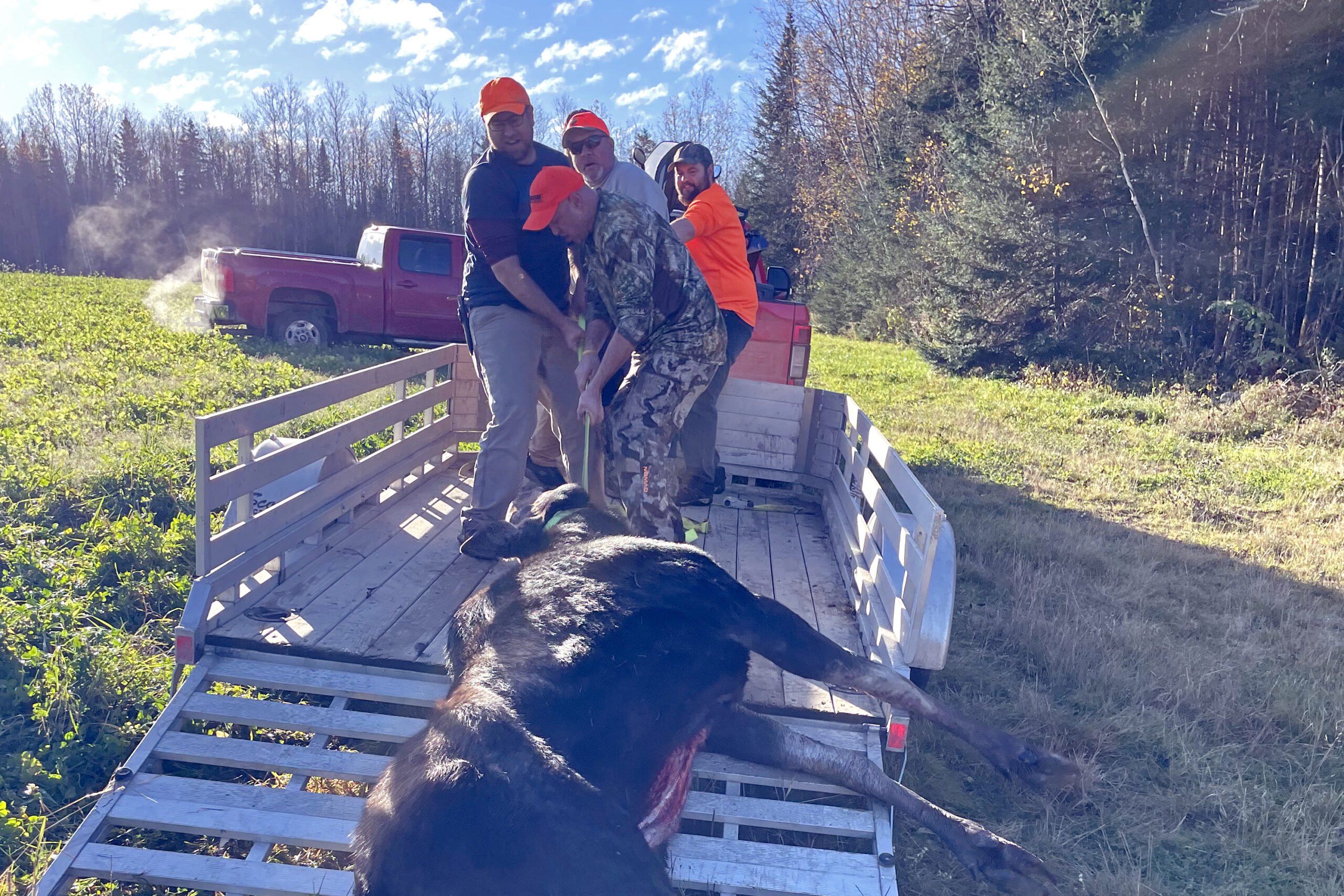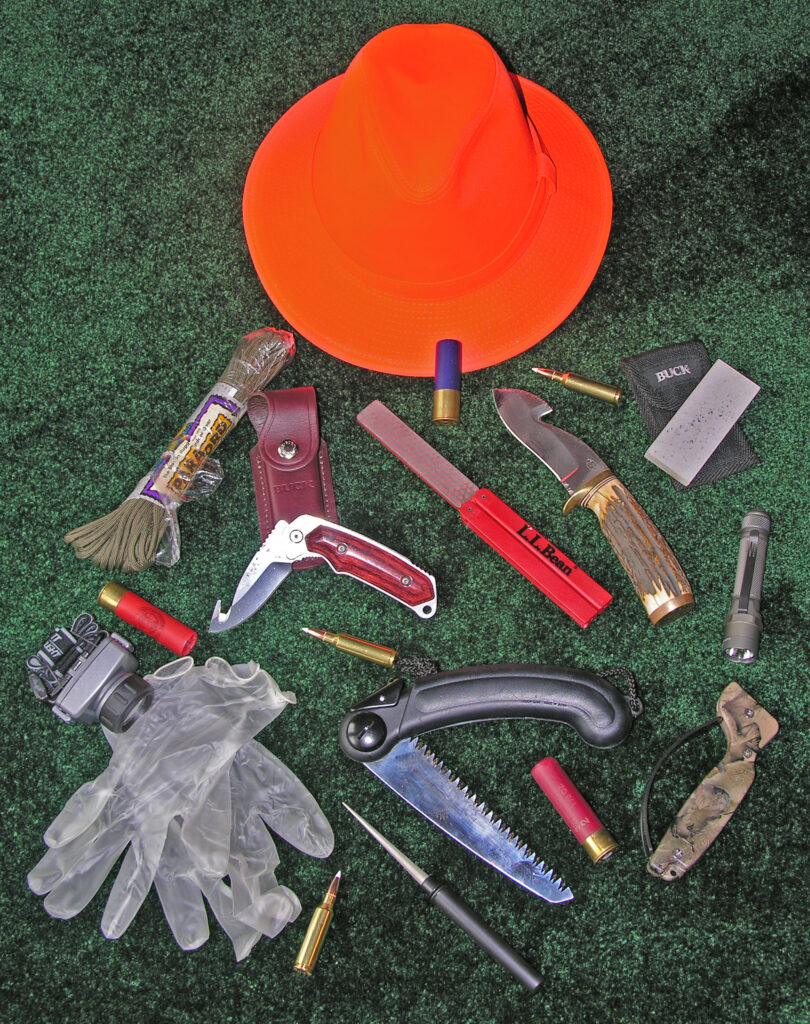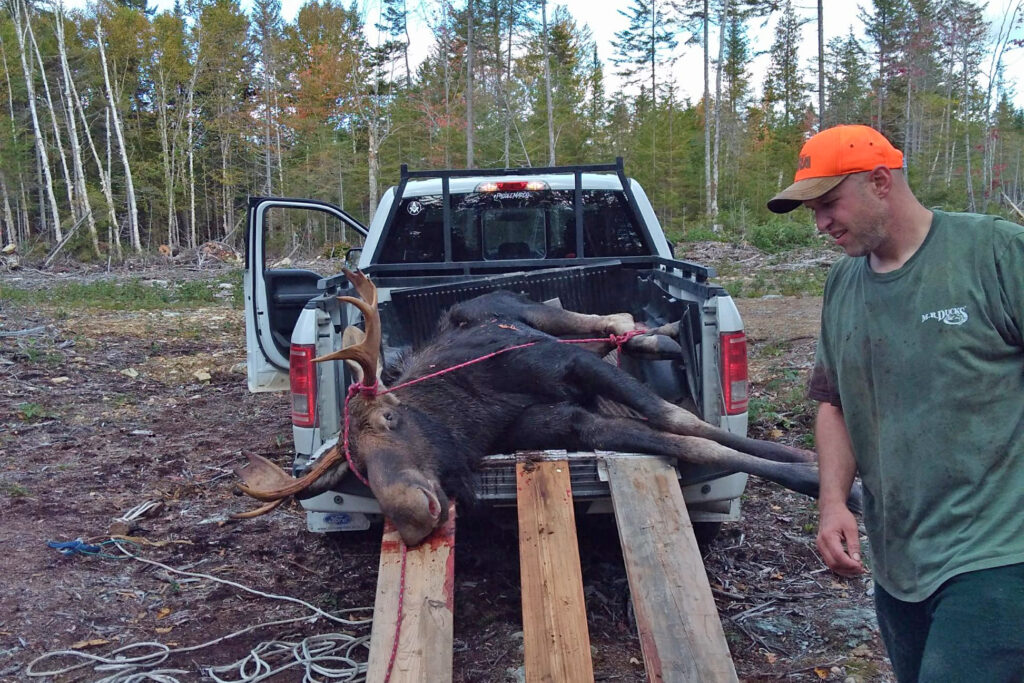
Since 1982 an annual moose hunting lottery has taken place here in Maine and those lucky winners have enjoyed an exciting hunt and a freezer full of delicious game meat. There are three one-week seasons spread from late September to early November with 4,105 permits issued this year to specific zones designated for hunting.
For many sportsmen, especially those near retirement age, it may just be a once-in-a-lifetime experience. Proper preparation is a must for success and enjoyment.
Once the shot is fired, the prized animal is down and the initial celebration winds down, the real work begins. Without the proper gear and equipment, cleaning, moving, loading, and transporting a moose that can weigh a thousand pounds goes beyond challenging. Unusually warm weather or an animal that ends up in a pond or stream or a long distance from any path, and the task becomes truly difficult. Worst case scenario, some or even most of the delicious meat may be spoiled by heat, insects, dirt and debris or improper handling.
Novice hunters who have never gutted a big game animal before need to read an article, watch a video or seek guidance from an experienced outdoorsman about the task. Better still, take a friend with game cleaning experience on the hunt. He gets some meat, the neophyte gets hands-on guidance and many hands make light work. The further a large moose is from the vehicle, and the wetter or thicker the location is, is inversely proportional to how much the fun the rest of the day will be.

The most important set of tools for field dressing any game animal is sharp cutlery. At least two keen-edged knives are a must, and since they are likely to lose their edge during the job, a whetstone, file and sharpening steel will be needed. If the moose has to be skinned, sectioned and deboned to be carried out of the woods, the knives and sharpening utensils become even more important.
In addition, a sharp, wide-bladed skinning knife, a meat saw and hatchet will be useful if quartering the animal is required. A set of elbow-length field dressing rubber gloves or at least latex gloves cuts down on the mess as well as ruined clothes. I carry a 5-gallon bucket with a couple of sets of plastic gloves, a roll of paper towels, plastic bags, cloth meat bags, cutlery and sharpening utensils and a small first aid kit — just in case the knife slips.
The bucket can carry water from a nearby source to rinse out the body cavity after cleaning. Washing away as much blood and debris from exposed meat reduces the chance of spoilage and keeps flies somewhat at bay during field processing and travel. Clean and cool are the two main objectives when caring for game animals. Take care of your meat in the field and you will be rewarded at the dinner table.
Have lots of ropes or cable and a sturdy come-along or winch to drag the game from the woods and load it onto a truck or trailer. A set of heavy tree shears and a chain saw for swamping a trail can be a big help. Many hunters have had to winch a moose from stump to stump for several hundred yards, and without a saw and ax to move deadfalls the work would have doubled. An ATV or UTV with all-wheel drive can save a lot of time and trouble during the hauling chore, and if there’s an electric winch, so much the better, but even these mechanical workhorses may need some sort of trail swamped for travel. If you are hunting on private or state-controlled land, be sure such recreational vehicles are permitted.

While it’s possible to load a big moose into a pickup bed, it’s no simple chore. A sturdy trailer with a solid ramp-style tailgate offers a lower-to-the-ground option where a winch or come-alongs replace human strain. If using a four-wheeler, usually the ATV trailer will be large enough to load the machine and a moose. Be sure to have a tarp or large piece of cheese cloth to keep insects, dust and debris out of the open cavity during transport.
It’s wise to bring along a couple of good-sized ice chests with several frozen milk jugs inside. The ice-filled containers can be placed inside the body cavity of the dressed-out moose to keep the meat from spoiling on hot fall days. The heart and liver can be placed in one of the coolers.
As for high-tech gear to aid the hunt, there are only a handful of items to consider beyond a set of good binoculars. A handheld GPS, a set of compact two-way radios, a range finder and perhaps an electronic moose call might all be useful. First and foremost, however, don’t forget a dependable camera to record memories of a successful hunt to last a lifetime.
Last, but certainly not least, take some time to research a top-rate meat cutter and perhaps a taxidermist as well. Moose meat is delicious and when cut properly and vacuum packed will provide many tasty meals. And whether you decide to just have an antler mount, a head mount or the whole big bull, a top-rate taxidermist will make it look alive.
Whether your moose ends up as a taxidermy mount, a photo on the office wall or a roast for Sunday dinner, the right equipment will increase your chances of success.
Moose hunts are a unique and fairly rare experience, so take full advantage of the opportunity and be prepared. It’s better to have it and not need it than vice-versa.
Good luck to the lucky lottery winners and hunt safe.






